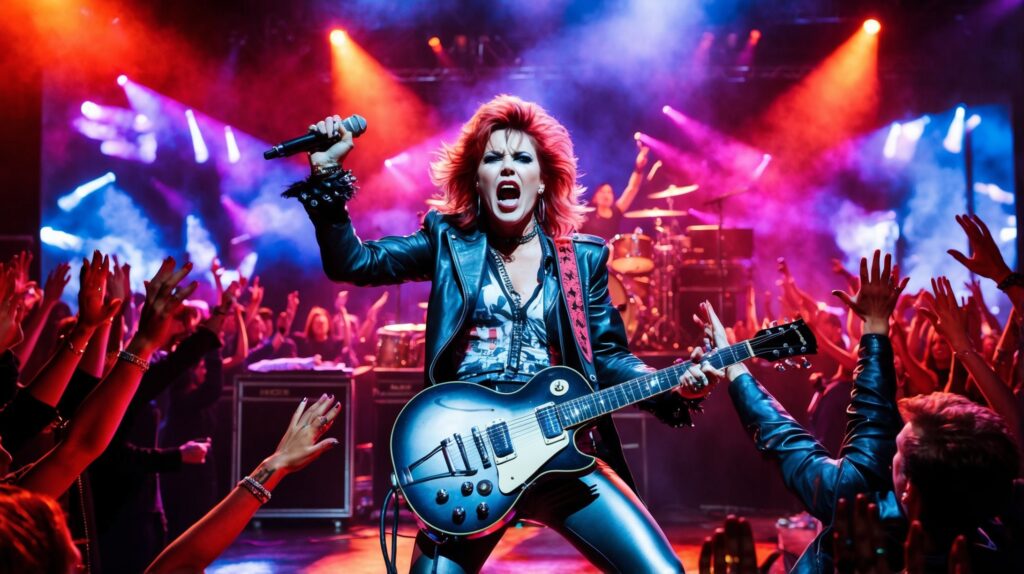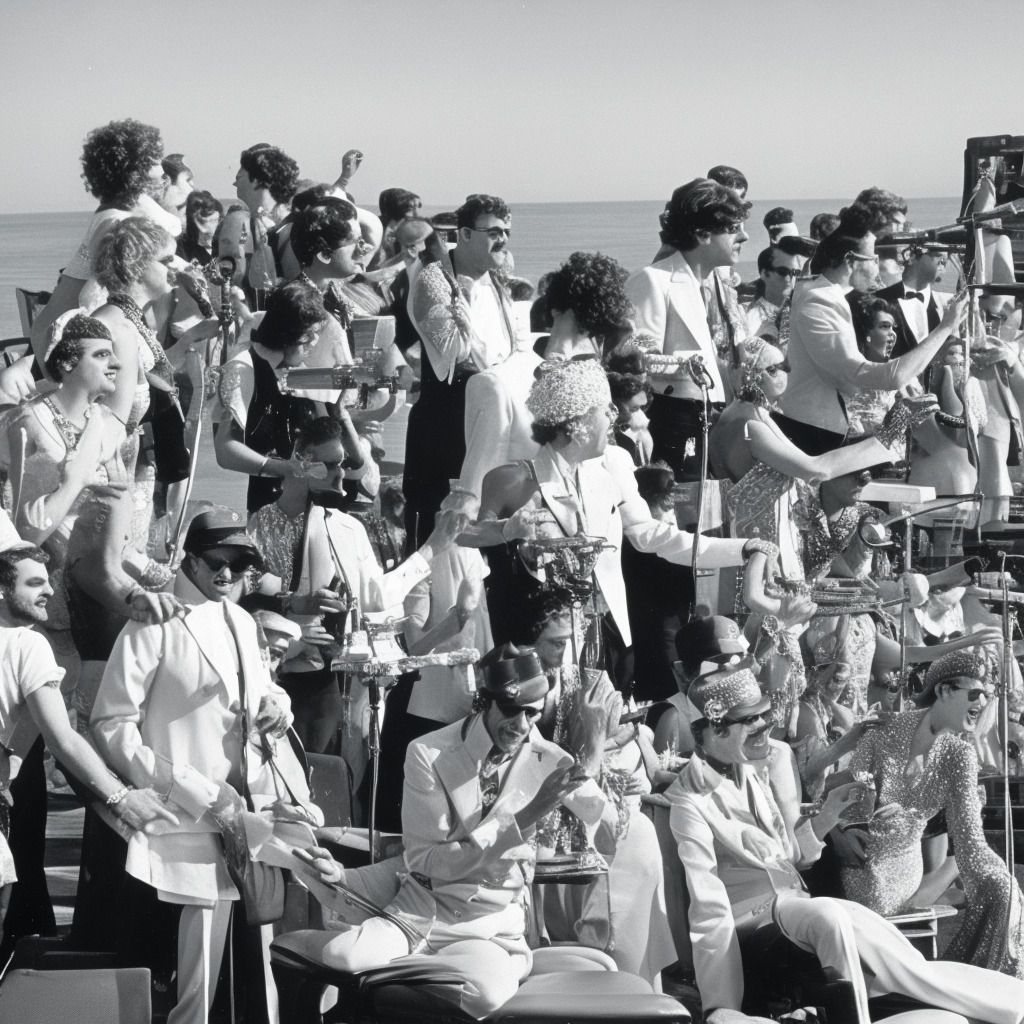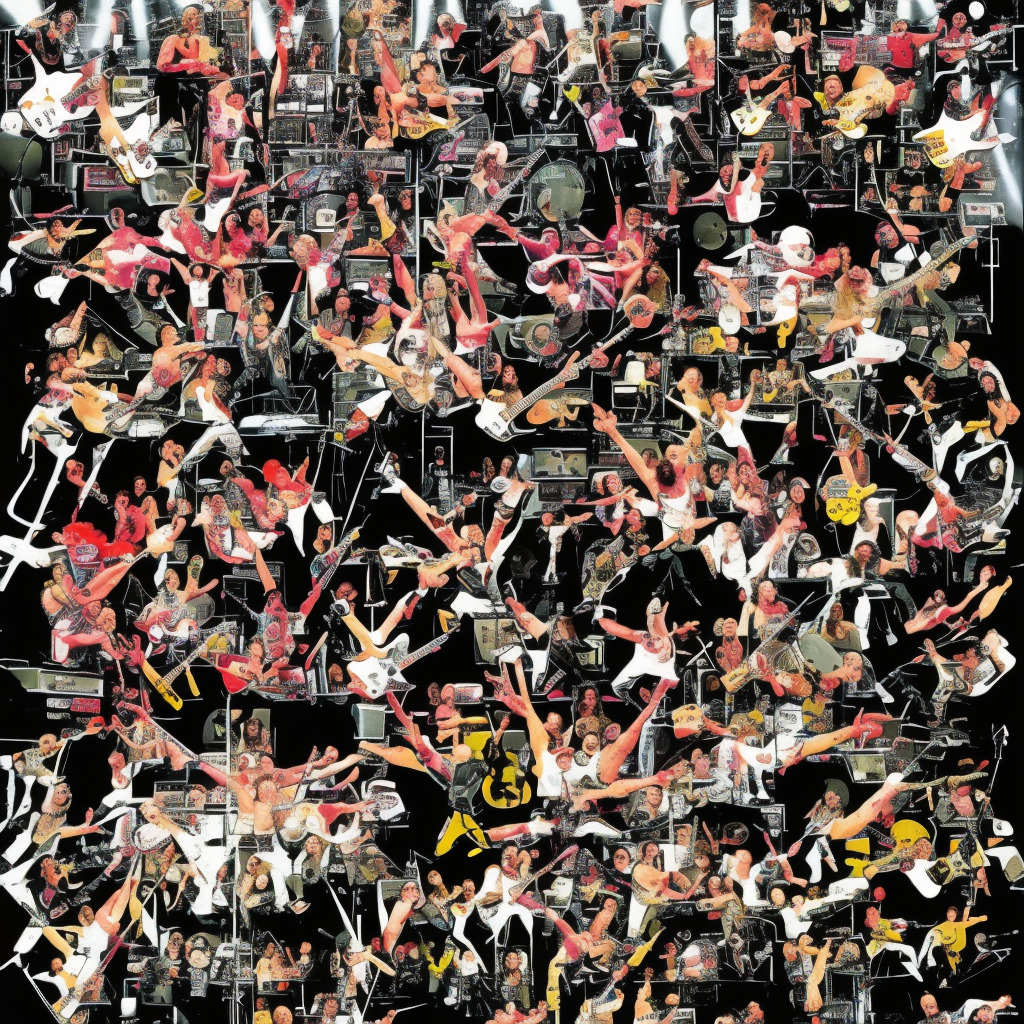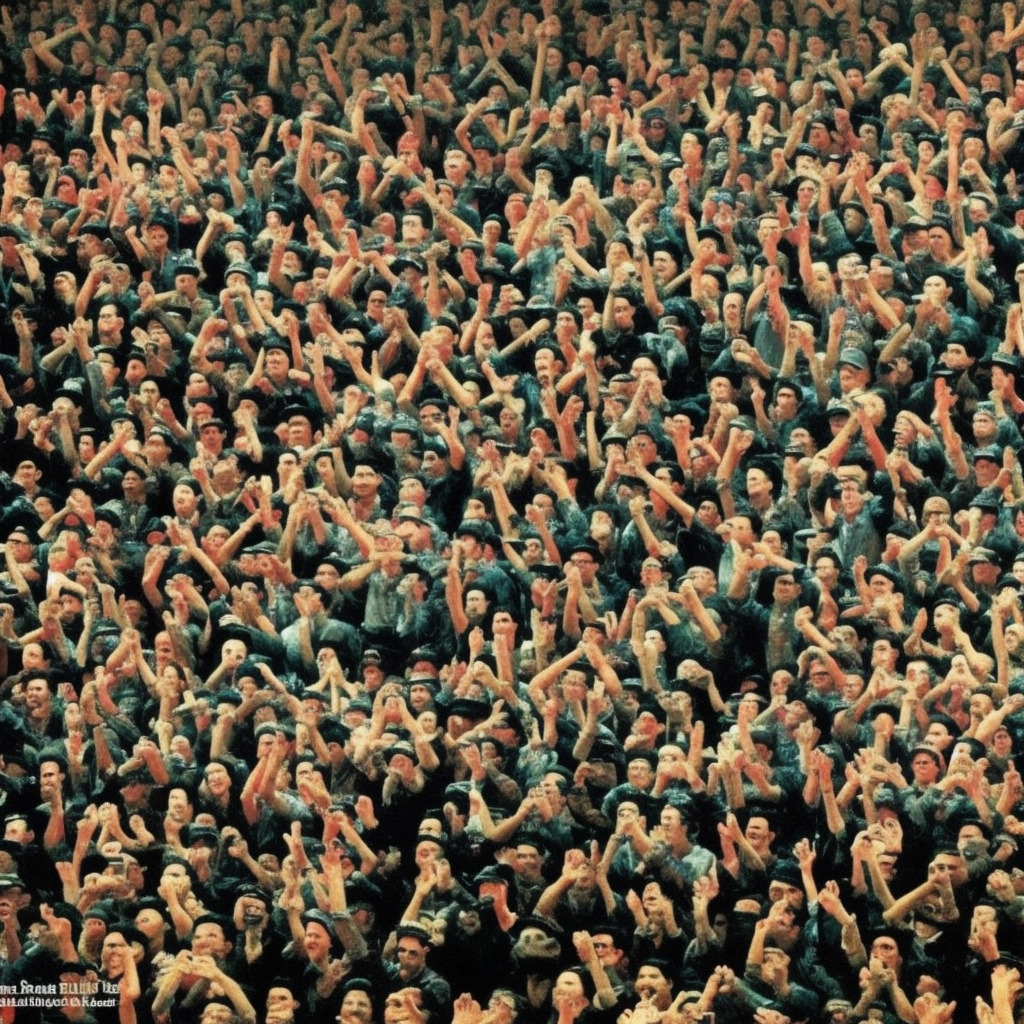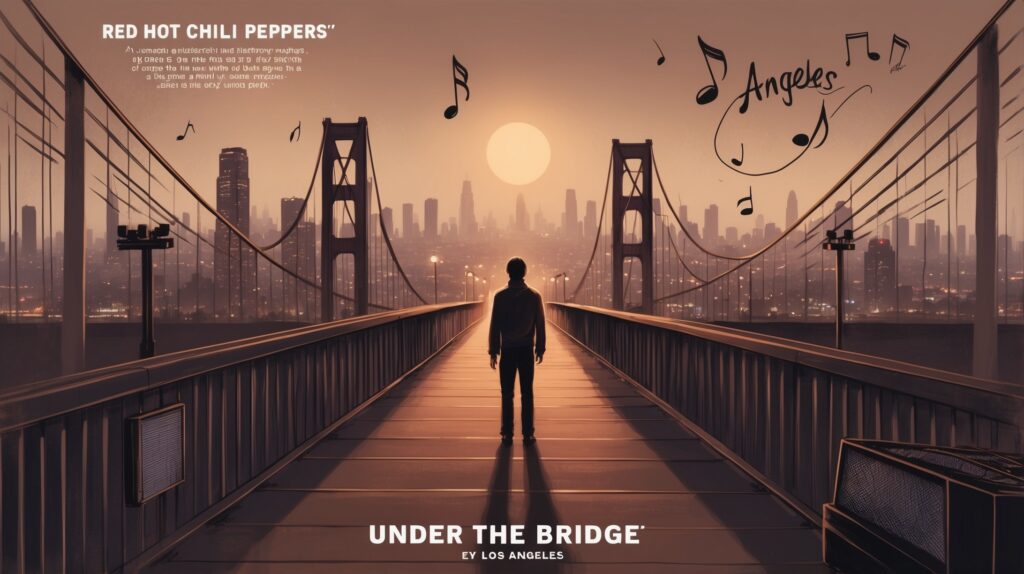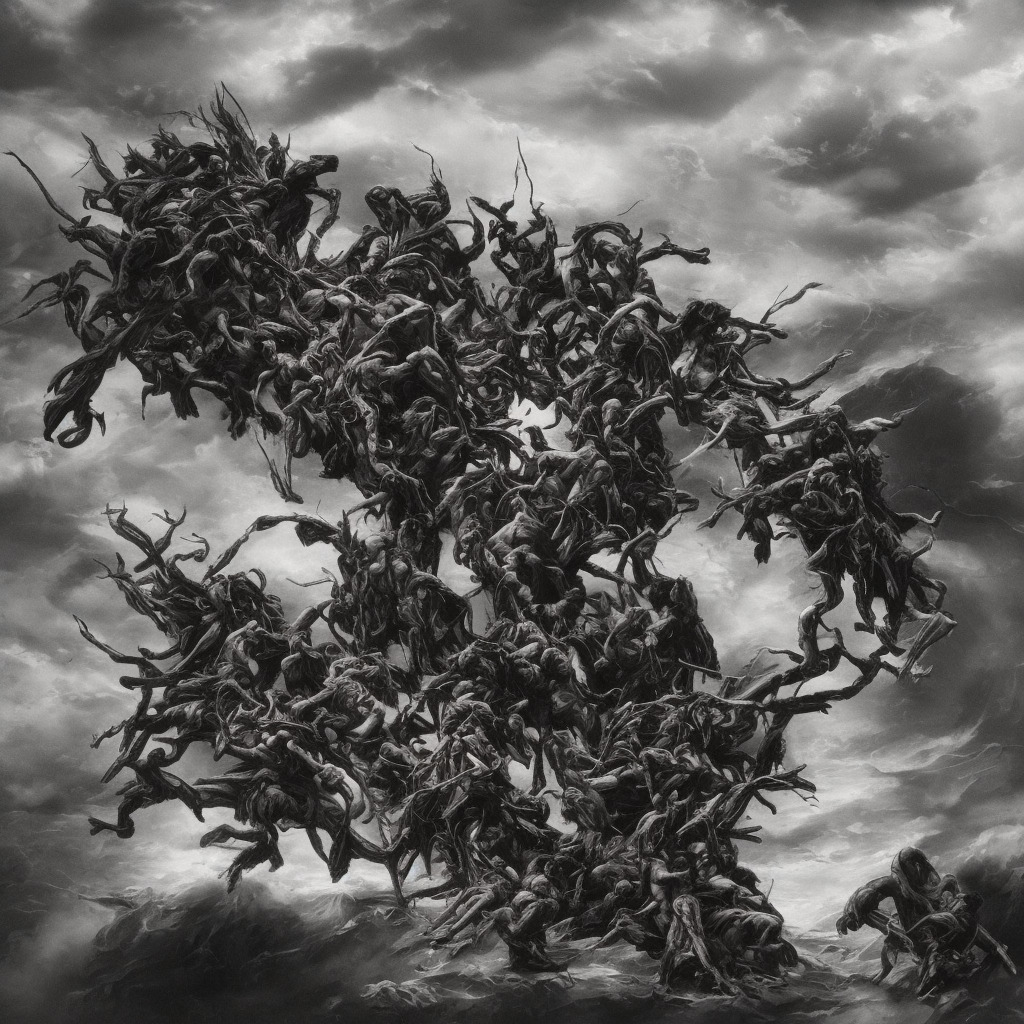The Rock Icon Who Shaped an Era
Explore Joan Jett’s journey with ‘I Hate Myself for Loving You,’ a pivotal track that bolstered her standing as a rock icon. Discover her early life, career triumphs, and the creative partnerships that shaped this era.
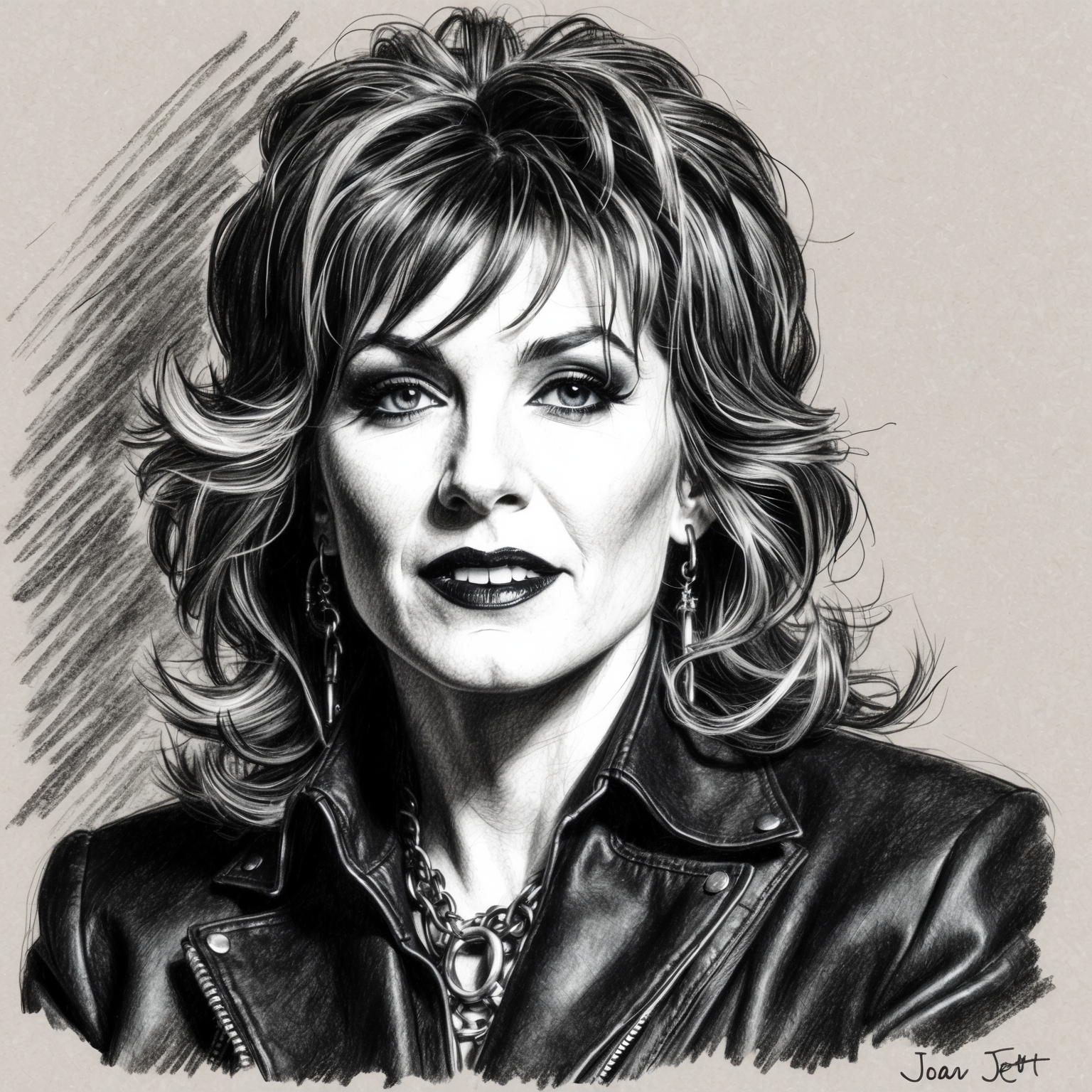
When discussing formidable forces in rock music, Joan Jett invariably takes center stage. Joan Jett’s ‘I Hate Myself for Loving You’ is more than just a staple of her career; it symbolizes a powerhouse moment that amplified her status in the music industry. As the lead single from her 1988 album ‘Up Your Alley,’ it was a riveting track that resonated deeply with audiences and showcased Jett’s brilliant mix of rebellious energy and musical talent that few could match.
Jett’s early life is as fascinating as her extensive career in music. Born Joan Marie Larkin in Wynnewood, Pennsylvania, she made her first major mark in the music world as a co-founder of The Runaways, an all-girl rock band formed in the 1970s. The Runaways offered her a platform to showcase her edgy and unapologetic style, attracting a significant youth following. Despite the band’s short run, Jett’s passion for music did not wane. She embarked on a solo career that eventually led her to form the Blackhearts, the band with whom she has delivered several classic rock hits.
The era that birthed ‘I Hate Myself for Loving You’ was a time when rock was evolving, with female rockers like Joan Jett proving pivotal in challenging the male-dominated scene. Joan Jett’s collaborations with accomplished musicians and producers added depth to her artistry. Notably, her partnership with producer and songwriter Desmond Child during the creation of this track exemplified a synergistic blend of Jett’s raw rock persona and Child’s pop sensibilities. The song was launched into a music scene ripe with vibrant and diverse rock acts, yet it managed to carve its own legacy, partly due to its authentic representation of the struggles and emotions entangled with love and inner conflict.
Desmond Child: The Musical Architect Behind ‘I Hate Myself for Loving You’
Explore the profound contributions of Desmond Child, the masterful composer behind ‘I Hate Myself for Loving You’. A key figure in rock history, Child’s unique style and enduring influence shaped this iconic track.
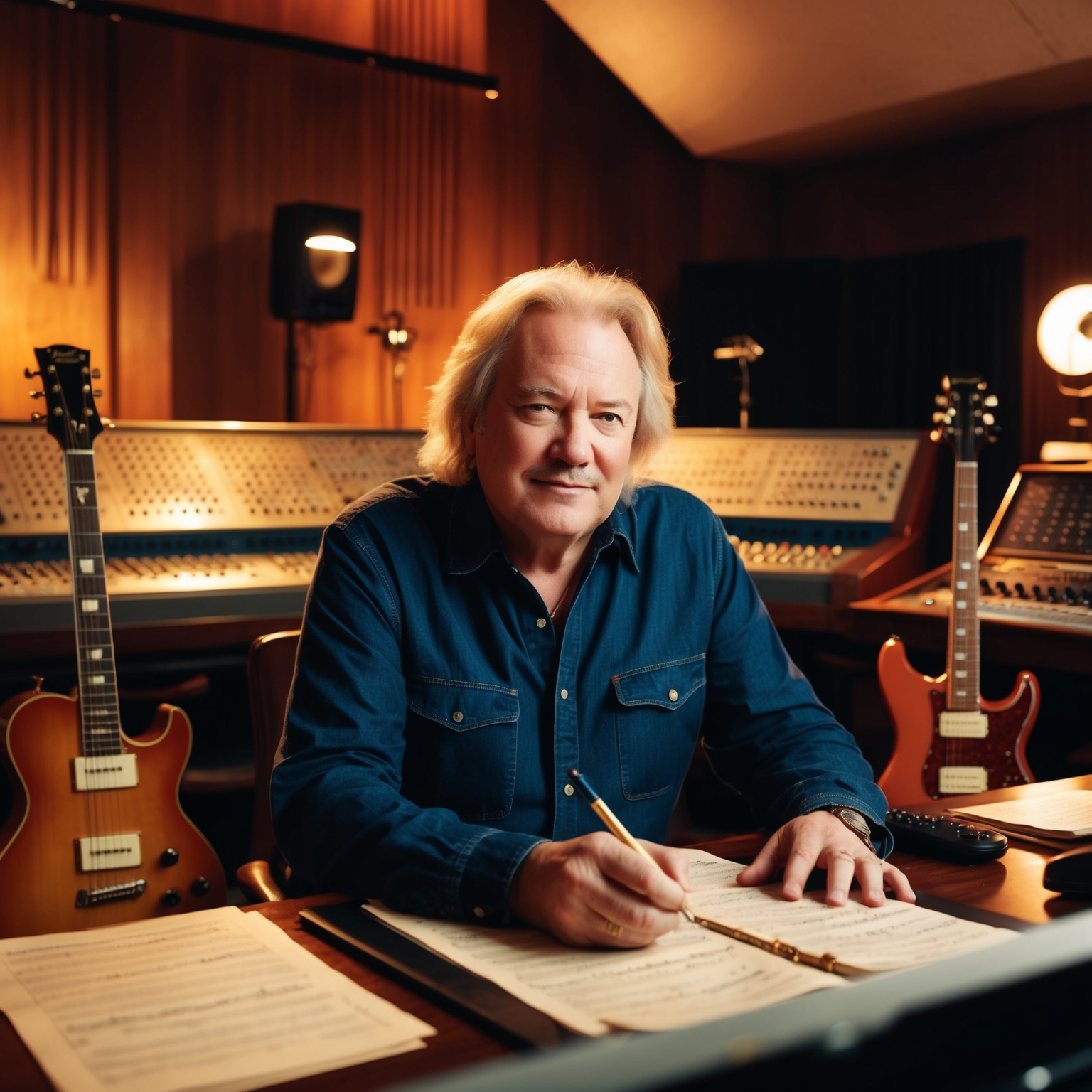
Desmond Child has long been recognized as one of the pivotal figures in the music industry, especially when it comes to crafting rock anthems that resonate across generations. Born John Charles Barrett, he grew up in an artistic household, which laid the foundation for his foray into music. He pursued a music degree in Miami, immersing himself in various genres, before hitting the ground running in New York’s vibrant music scene. With his eclectic background and knack for storytelling through music, Child’s influence is both widespread and enduring.
Known for his genre-spanning versatility, Child has left an indelible mark on rock, pop, and even country music landscapes. Heavily influenced by hits from the ’70s rock era, Child’s melodic genius combines arresting hooks with compelling lyrics—a synthesis palpable in ‘I Hate Myself for Loving You’. His influences are drawn from a rich tapestry of musical history, incorporating elements from rock legends to the catchy beats of pop radio. This ability to blend styles has made Child a sought-after collaborator throughout his career.
Having forged successful partnerships with many music legends, including Bon Jovi, Aerosmith, and KISS, Child’s collaboration with Joan Jett on ‘I Hate Myself for Loving You’ was a match made in rock heaven. His signature style—where guitar-driven energy meets lyrical vulnerability—aligned perfectly with Jett’s raw vocal prowess, shaping the anthemic spirit of the track. This collaboration showcased his talent in merging his robust compositional techniques with the distinctive elements of his collaborators.
A Celebration of Success and Influence
The song ‘I Hate Myself for Loving You’ garnered a nomination at the MTV Video Music Awards and has inspired numerous covers across diverse genres. Its presence in pop culture is undeniable, featuring in televised sports, video games, and live performances globally.

‘I Hate Myself for Loving You’ stands as a timeless testament to Joan Jett’s unyielding impact on the rock scene. While the song itself may not have taken home a trophy from major award ceremonies, its influence and staying power have been celebrated in multiple ways. Notably, it earned a nomination at the MTV Video Music Awards in 1988 for Best Female Video, acknowledging the powerful visuals and Joan Jett’s unapologetic presence that helped propel the song to the top of the charts.
Beyond traditional accolades, the song’s legacy is enriched by its wide array of covers by various artists. One of the most notable renditions came from pop star Britney Spears, who delivered an energetic version during her 2009 Circus Tour, proving that the track’s infectious energy transcends genres. Cover bands and aspiring artists worldwide continue to pay homage to this rock anthem, invigorating audiences with their own renditions.
Further cementing its cultural imprint, ‘I Hate Myself for Loving You’ has reverberated through popular media. It has graced television screens as the theme song for NBC’s Sunday Night Football, cleverly reimagined as ‘Waiting All Day for Sunday Night’. The track’s inclusion in video games such as ‘Guitar Hero: Aerosmith’ lets players step into the rockstar’s shoes, perpetuating its legacy among new generations of fans.
Climbing the Charts: ‘I Hate Myself for Loving You’
I Hate Myself for Loving You’ was a major chart success, peaking at No. 8 on the Billboard Hot 100 and revitalizing Joan Jett’s career in 1988. With strategic promotion and a powerful rock sound, the track left a lasting impact on fans and critics alike, securing its place in rock history.

Joan Jett’s 1988 hit ‘I Hate Myself for Loving You’ was a striking presence on the music charts. Released as the lead single from the album “Up Your Alley,” the song marked a high point in Jett’s career, peaking at No. 8 on the Billboard Hot 100. This notable achievement made it her third Top 10 hit in the United States, solidifying her reputation as the queen of rock ‘n’ roll.
Upon its release, ‘I Hate Myself for Loving You’ entered the charts at a steady pace but quickly rose due to its catchy rock anthem style and infectious energy. Compared to other contemporary tracks, the song stood out, boasting a hard-hitting sound that was quintessentially Jett. This was a period when pop and glam rock were dominating the airwaves, yet Jett’s raw and unapologetic sound captured the listeners’ attention in a remarkable fashion.
This single was more than just a commercial success; it played a crucial role in influencing Joan Jett’s future trajectory. Following a string of hits in the early ’80s, some believed Jett’s career might be waning, but ‘I Hate Myself for Loving You’ shattered those assumptions, proving her continued relevance in the evolving music scene. The aggressive promotion from her record label contributed to its visibility. Music videos and live performances were strategically used to capture a larger audience base, ensuring the song’s message was heard across various platforms.
Public and critical reception of ‘I Hate Myself for Loving You’ further cemented its place in rock history. Critics lauded it for its powerful lyrics and relentless guitar riffs, admiring Jett’s ability to blend rock with a mainstream appeal. Culturally, the song became an anthem for the heartbroken and fierce, resonating with fans worldwide who found solace in its raw depiction of love and regret.
Even in the digital age, ‘I Hate Myself for Loving You’ continues to thrive. Streaming platforms have reported consistent numbers, with the song featured on numerous rock-centric playlists, proving its enduring appeal. Furthermore, its influence is evident across social media, where fans celebrate its legacy, sharing covers and tributes that amplify the community’s love for this timeless piece. The song’s economic impact remains profound, boosting sales and merchandise for Jett, and enriching her live performances with fans eager to hear this classic hit.
Delving into the Visuals of ‘I Hate Myself for Loving You’
Explore the energetic and visually striking music video for Joan Jett’s ‘I Hate Myself for Loving You,’ and how it amplified the song’s impact.
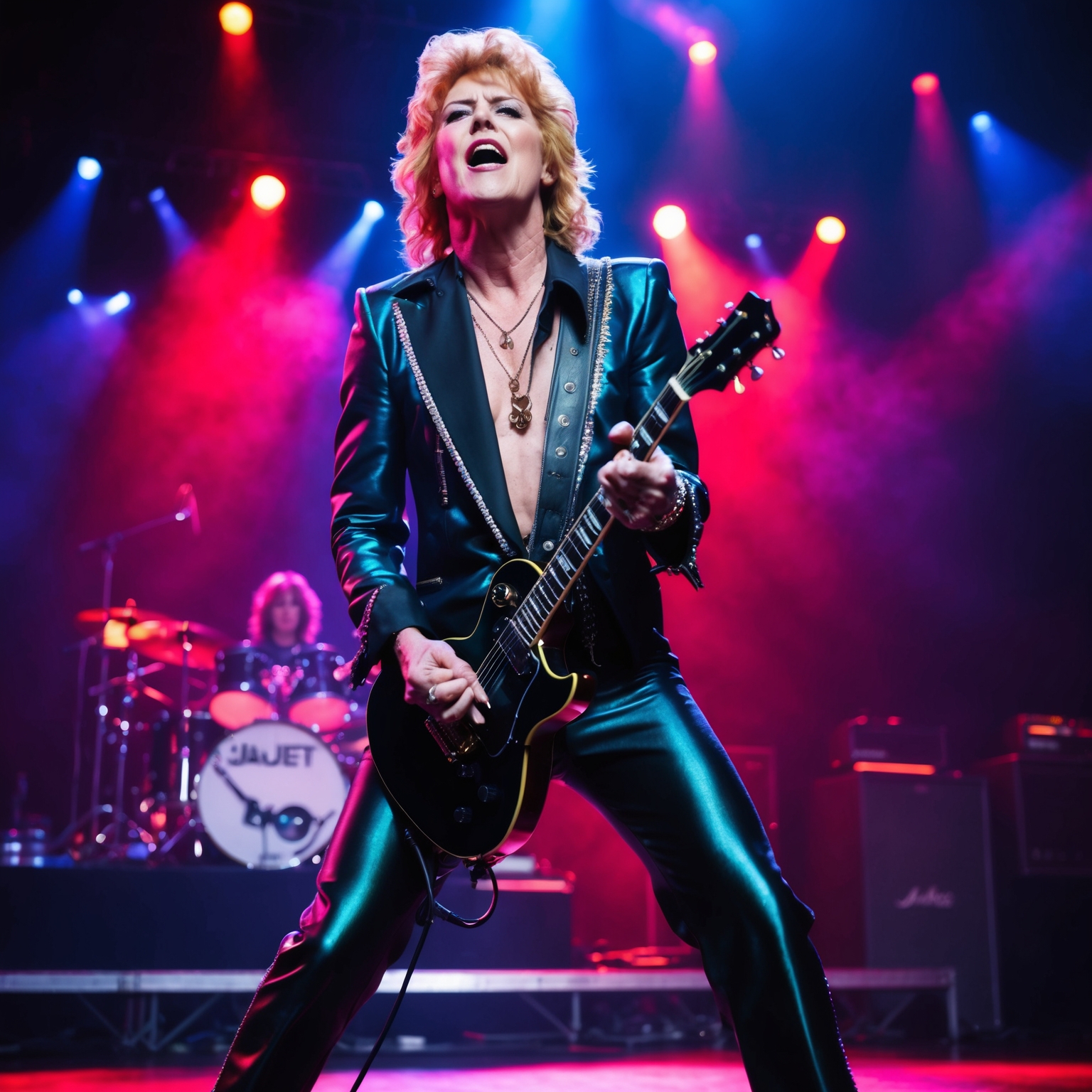
The music video for **Joan Jett’s** ‘I Hate Myself for Loving You’ is a vibrant reflection of the song’s rebellious spirit. Released during the late 1980s, a period known for its bold fashion and energetic visuals, the video captures the essence of Jett’s persona—powerful, edgy, and unapologetic. Set against a stark backdrop that emphasizes her commanding presence, the video features Joan Jett performing with her band, **The Blackhearts**, creating an atmosphere that is both intimate and electrifying. The video’s aesthetics are characterized by sharp contrasts and dynamic camera movements, aligning perfectly with the song’s raw energy and emotion. Visually, it complements the lyrical themes of conflicted love, capturing the push and pull emotions that Jett masterfully sings about.
One of the most intriguing aspects of the video is its ability to boost the song’s popularity across a broader audience. At the time of its release, music videos were becoming a critical tool for artists to reach listeners, and ‘I Hate Myself for Loving You’ was no exception. The visual appeal of Jett’s style and the video’s high-energy performance resonated with viewers, cementing the song’s place in rock history. This visual portrayal of the song helped it maintain a lasting impression and made it a staple on MTV.
Critical reception of the video was generally positive, with many praising Jett’s on-screen charisma and the straightforward, yet engaging, presentation. In terms of production, the video was crafted by a skilled team that understood the strengths of **Joan Jett** not only as a musician but also as a visual icon, perfectly encapsulating the rock aesthetic she embodied. While there are no notable celebrity cameos, the video’s focus on Jett showcases the undeniable draw of her singular presence and reinforces her role as a trailblazer in the rock genre.
Deconstructing the Sound: A Look into the Structure of ‘I Hate Myself for Loving You’
I Hate Myself for Loving You’ showcases Joan Jett’s knack for fusing gritty rock with catchy melodies. Featuring power chords in E Minor, intense vocals, and sharp guitar riffs, it highlights a polished yet raw evolution in Joan’s style.

‘I Hate Myself for Loving You’ is an excellent example of Joan Jett’s ability to blend gritty rock elements with catchy pop hooks. The song is primarily set in the key of E Minor, providing an edgy and intense feel that perfectly suits the theme of emotional conflict. The chord progression is built around power chords, which are a hallmark of rock music, giving the track a robust and driving foundation. This progression, combined with a tempo that lies around 125 beats per minute, creates a sense of urgency that aligns beautifully with the song’s lyrical content.
Melodically, the song employs powerful vocal lines and harmonies that emphasize Joan Jett’s commanding presence as the lead singer. The harmonic structure is both simple and effective, allowing the vocals to shine while also providing room for the energizing guitar riffs that punctuate the track. The rhythm section, with its consistent backbeat, ensures the song has a groove that is both danceable and headbang-worthy.
Instrumentation in ‘I Hate Myself for Loving You’ includes electric guitar, bass, drums, and vocals, each contributing to the signature raw sound. The guitar work is particularly notable, featuring solos that accentuate the song’s rock influences, while the drums drive the tempo and keep the energy high. Compared to earlier Joan Jett songs, this track marks a more polished production style, reflecting an evolution in her sound and artistic sophistication.
An interesting anecdote from the recording session is the involvement of renowned producer Desmond Child, known for his work with Bon Jovi and Aerosmith. His input brought a glossy finish to the track without sacrificing the raw energy Joan Jett is known for. The recording took place at The Hit Factory in New York, a studio famed for its state-of-the-art equipment and history of gracing legendary artists.
When considering ‘I Hate Myself for Loving You’ within the broader scope of Joan Jett’s discography, one can observe a transition from the straightforward punk rock vibes of her earlier work to a more refined yet still rebellious rock sound. This song highlights her journey towards embracing mainstream rock elements while maintaining the edge and attitude that defines her music.
Unraveling the Emotional Complexity in “I Hate Myself for Loving You”
Explore the intricate emotions and narrative style of Joan Jett’s “I Hate Myself for Loving You” as it delves into the universal struggle of love and frustration. Through its evocative lyrics, the song captures the personal and societal complexities of romantic relationships.
You said you’d meet me, now it’s quarter to two
I know I’m hangin’ but I’m still wantin’ you
Hey Jack, It’s a fact they’re talkin’ in town
I turn my back and you’re messin’ around
I’m not really jealous, don’t like lookin’ like a clown
I think of you every night and day
You took my heart and you took my pride away
I hate myself for loving you
Can’t break free from the the things that you do
I wanna walk but I run back to you
That’s why I hate myself for loving you
Daylight spent the night without you
But I’ve been dreamin’ ’bout the lovin’ you do
I won’t be as angry ’bout the hell you put me through
…
******* This Lyrics is NOT for Commercial use *******
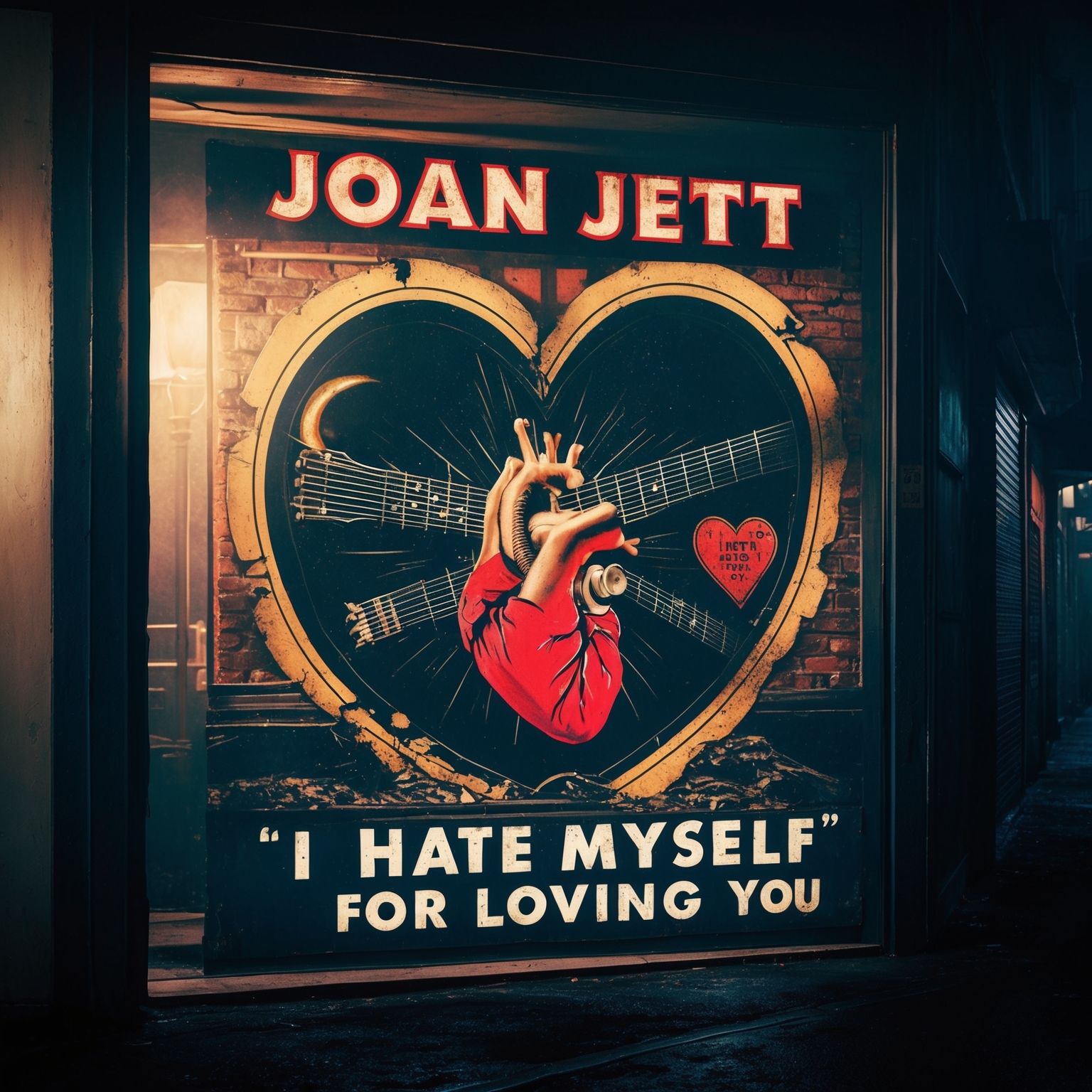 Lyrical Themes and Messages: At its core, “I Hate Myself for Loving You” by Joan Jett is a powerhouse of raw emotion and vulnerability, encapsulating the tumultuous feelings of love intertwined with frustration. The song navigates the complex landscape of romantic dependency, where affection clashes with the harsh reality of betrayal. This duality resonates deeply with listeners, as it highlights the universal experience of being trapped in a cycle of love and disappointment. Despite its personal nature, the song taps into broader themes of emotional conflict and self-awareness, reflecting societal norms around relationships in the late 1980s when it was released.
Lyrical Themes and Messages: At its core, “I Hate Myself for Loving You” by Joan Jett is a powerhouse of raw emotion and vulnerability, encapsulating the tumultuous feelings of love intertwined with frustration. The song navigates the complex landscape of romantic dependency, where affection clashes with the harsh reality of betrayal. This duality resonates deeply with listeners, as it highlights the universal experience of being trapped in a cycle of love and disappointment. Despite its personal nature, the song taps into broader themes of emotional conflict and self-awareness, reflecting societal norms around relationships in the late 1980s when it was released.
Narrative and Storytelling: Written from a first-person perspective, the song offers an intimate glimpse into the narrator’s emotional turmoil. The narrative is linear yet impactful, depicting a story of longing and self-reproach. The choice of first-person narration amplifies the emotional intensity, allowing listeners to connect with the narrator’s inner voice as she grapples with her contradictory feelings. This storytelling approach makes the song relatable, creating a shared experience between the artist and the audience.
Use of Literary Devices: Joan Jett masterfully employs various literary devices to enhance the song’s lyrical quality. The use of alliteration and rhyme schemes in phrases like “hanging” and “wanting” creates a rhythm that mirrors the continuous cycle of emotions experienced by the narrator. Metaphors such as “you took my heart and you took my pride away” vividly capture the emotional cost of the relationship, adding depth to the song’s narrative.
Comparative Analysis with Other Works: Compared to other works by Joan Jett, “I Hate Myself for Loving You” stands out for its introspective lyrics and rock-heavy sound. Unlike the rebellious declarations found in songs like “Bad Reputation,” this track delves into personal vulnerability, making it a unique addition to her discography. Within the broader rock genre, the song aligns with themes of love and angst found in the works of contemporaries like Pat Benatar and Heart, yet distinguishes itself with Jett’s distinct vocal delivery.
Cultural and Social References: The lyrics subtly reflect the cultural atmosphere of the 1980s, a time when the music industry was dominated by themes of love, freedom, and individuality. The song’s portrayal of romantic entanglement and self-reflection holds relevance even today, illustrating the timeless nature of its emotional themes.
🎸 Did you know I Hate Myself for Loving You was Joan Jett’s comeback anthem, peaking at #8 in ’88? Still rocking! 🔥 #JoanJett #RockIcon #FunFact #80sMusic https://bit.ly/3UxOHkN
Click to Tweet

